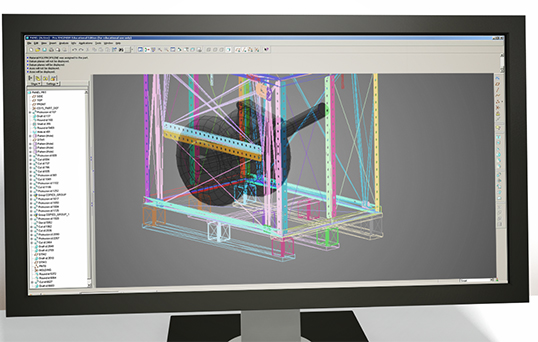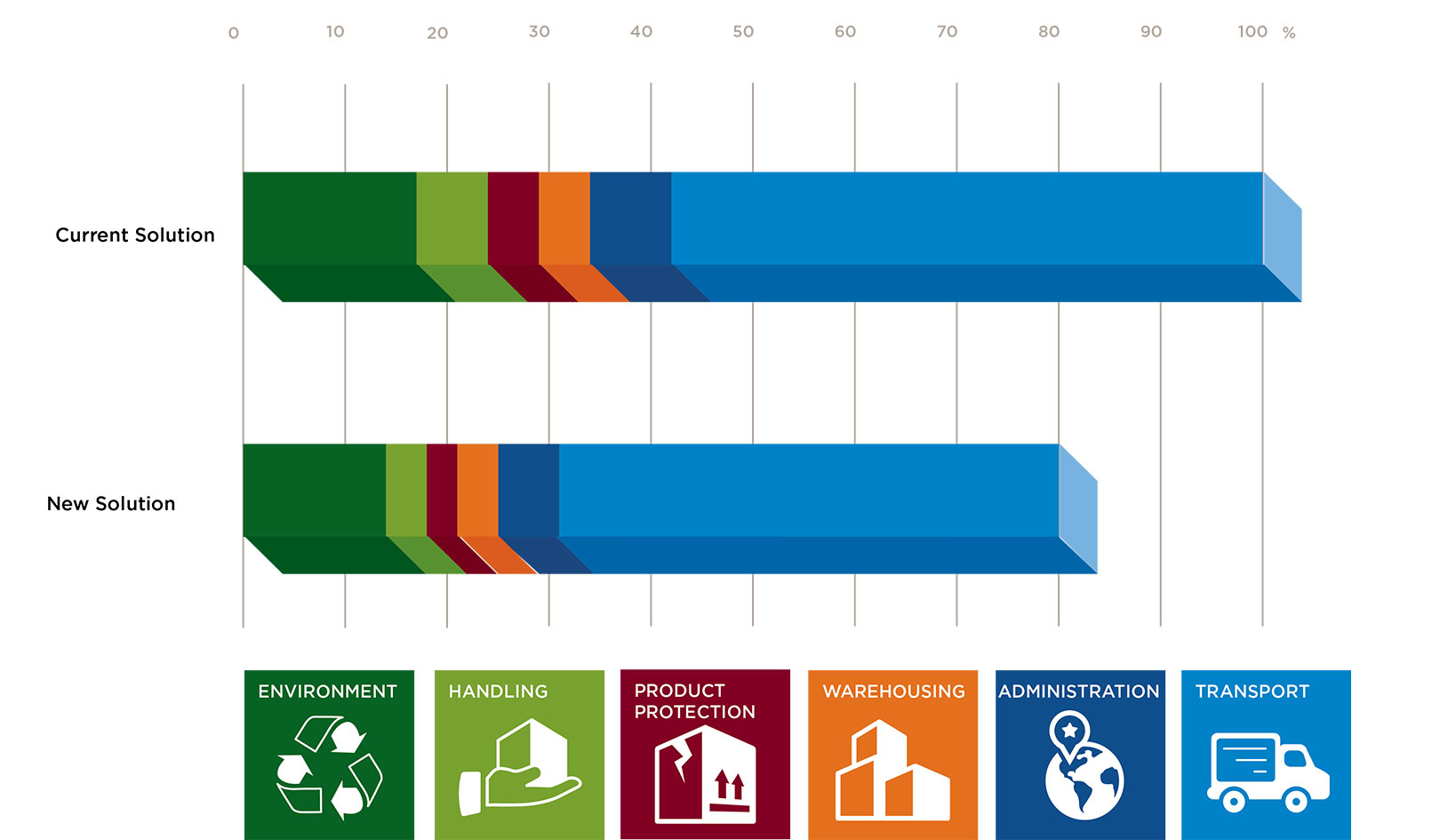Cost factors to consider
For example, if poor quality packaging is used, this can increase overall costs in terms of the percentage of products that are damaged during shipping. Other factors that can impact the cost of logistics include:
- Transportation costs. The cost of actually moving the product from one point to the next is the largest factor in a total supply chain cost, usually 50% of total cost. This includes, but is not limited to, costs associated directly with transportation such as fuel or shipping charges, insurance, and so on.
- Protection of the product. As noted above, one role of packaging is to protect the product from being damaged during shipment. Packaging that is inadequate to protect the product will create costs associated with damaged or destroyed product; on the other hand, packaging that offers more protection than is necessary will result in higher than necessary logistics costs.
- Handling costs. Moving packaging around, such as moving it from a railcar to a truck, contributes to the cost of shipping a product. The design and shape of packaging can add to or detract from this cost.
- Warehousing costs. Depending on the specifics of a particular shipment, the product may need to be stored for a time before continuing its journey. The cost to store the product can be a function of the packaging used. Packaging that provides adequate protection from the element may enable shipments of certain types of goods to be stored outdoors or in warehouses that are not climate controlled.
- Administrative costs. The cost of tracking, allocating resources to shipment and handling, contacting suppliers, coordinating operations, and so on contribute to the cost of logistics.
- Environmental costs. Environmental factors can contribute to the overall logistics cost of a business. This can take the form of costs for the utilization of landfill resources, fuel costs, and other similar costs. These costs can be concrete—identifiable in quantifiable dollar amounts—or they can be more subtle, as in the overall cost to the environment of running a given operation.
These, and other factors, mean that logistics costs can quickly eat into a profit margin. To address this issue, Nefab has developed a Total Cost Approach: a method of packaging optimization that minimizes the various cost factors and, in so doing, reduces logistics costs considerably.
Packaging Optimization
The Nefab Total Cost Approach utilizes various means of reducing costs. This includes:
Reduction in administrative costs by reducing the number of suppliers and vendors utilized in the shipping process. By simplifying interactions with suppliers and vendors Nefab can decrease the dollars lost to administrative costs.
Reduction in handling costs by designing packaging such that the packing time for a given package is minimized. Employees can pack goods more quickly and efficiently, meaning less money spent on handling the product and its packaging. The Nefab Total Cost Approach emphasizes using the correct packaging for the method of transport that will be utilized. For example, packaging goods for shipment via rail will differ from packaging goods for shipment via air freight. This reduces lost space in the shipment, and increases the efficiency of the transport being utilized.
More efficiently protecting the product by considering environmental and product factors. To minimize the chance of product damage during shipping, Nefab takes into consideration both the likely environment through which the product will be shipped as well as considering the level of product protection necessary. For example, shipping fine china would require more protection than shipping plastic mugs; by adjusting the level of protection to meet the need of the product, the approach minimizes breakage while reducing the waste that can result from utilizing too much protection for those goods that don’t need it.
Utilizing returnable packaging when possible. A significant factor in product shipping costs is the cost of the materials used to ship the product. When an end user simply discards the shipping material, the shipping business must repurchase the shipping materials for the next shipment. However, the Nefab Total Cost Approach emphasizes the use of returnable packaging (when feasible to do so). This reduces the amount of packaging per unit that a given business will need to purchase. Further, this will reduce environmental costs by reducing the per-unit amount of waste that is being shipped off to a landfill.
How Does Nefab Help?
Of course, not all supply chains are equal, and where one may benefit from a given solution, a different supply chain may need something else entirely. Nefab is able to analyze and evaluate a given supply chain and identify key areas where savings may be found. By doing this, Nefab can help a business to determine which of the above solutions would bring the largest increase in shipping efficiency.
Let Nefab Help Improve Your Bottom Line
If you are ready to increase your profitability, Nefab can help your business today. Logistics can be a complicated and multilayered procedure, and it is not always immediately apparent at a glance which factors are contributing the most to unnecessary costs. Let Nefab take the time to evaluate your logistics chain and identify those key cost drivers that are excessive or even unnecessary altogether. After doing this, we can put together an action plan to help your business achieve maximum shipping efficiency, saving you money and adding to your bottom line.


